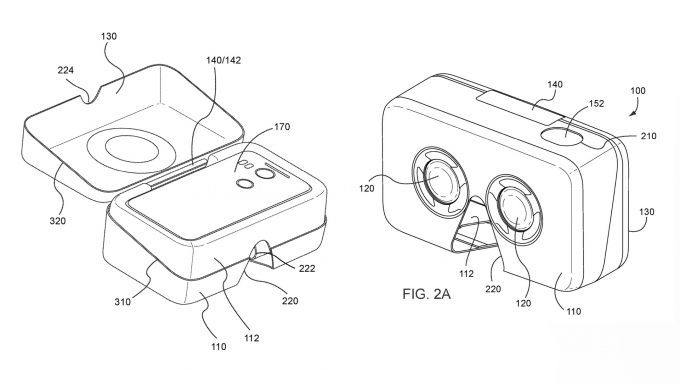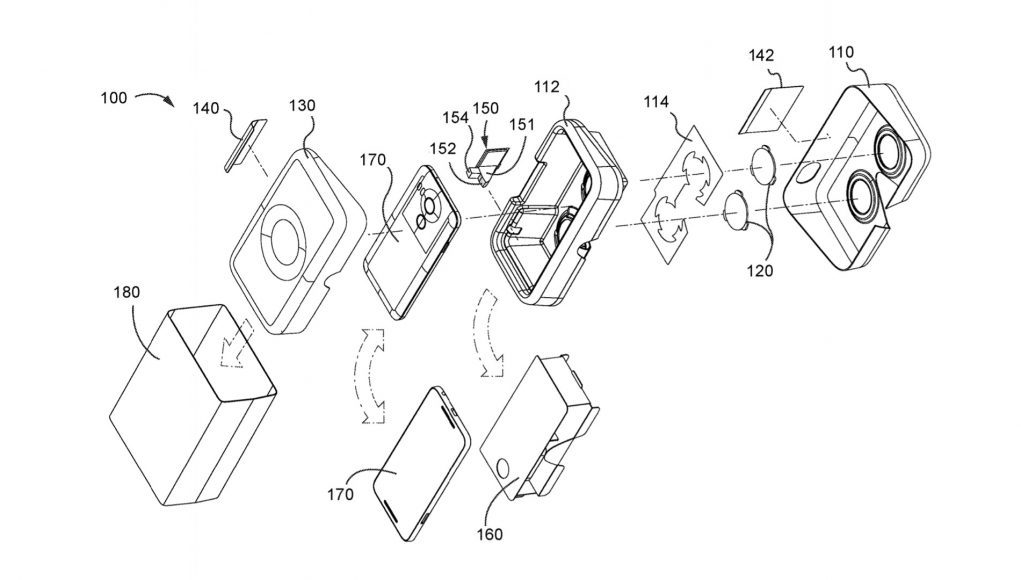A recently published Google’s patent application describes an ‘Integrated mobile device packaging and virtual reality headset’. The concept is to provide a ‘relatively low cost’ VR headset solution by shipping the smartphone in packaging that doubles as a VR viewer.
Google introduced Cardboard, their inexpensive VR solution to the world in 2014, producing a VR viewer enclosure for smartphones made from Cardboard. Since then, over 10 million Cardboard viewers have shipped, along with many similar products, ubiquitous to the point of being distributed free as promotional items. Google’s patent describes integrating an enclosure similar to that of Cardboard as a novel packaging solution for a smartphone, an especially interesting idea given that the much improved VR performance that comes with ‘Daydream Ready’ phones can also extend to VR apps made for Google Cardboard.
A Cardboard-like headset that ships with capable smartphones could act as a ‘VR lite’ option, with those especially interested in VR able to upgrade to a more capable VR viewer like Google’s Daydream View. Such an approach could help the company achieve their goal of ‘hundreds of millions of users in a couple of years’ using VR on Android.
 A few companies have experimented with integrating a VR viewer into packaging, such as Coca-Cola’s DIY viewer made from 12-pack boxes, and McDonald’s ‘Happy Goggles’ made from a Happy Meal box. More substantial VR headset shells (closer to a Gear VR in build quality and materials) are sometimes bundled with smartphones, and Alcatel’s Idol 4S packaging goes a step further, using the shell as part of the ‘unboxing’ experience in some regions, as shown in this video.
A few companies have experimented with integrating a VR viewer into packaging, such as Coca-Cola’s DIY viewer made from 12-pack boxes, and McDonald’s ‘Happy Goggles’ made from a Happy Meal box. More substantial VR headset shells (closer to a Gear VR in build quality and materials) are sometimes bundled with smartphones, and Alcatel’s Idol 4S packaging goes a step further, using the shell as part of the ‘unboxing’ experience in some regions, as shown in this video.
Originally filed on February 24th 2016, Google’s patent refers to cardboard or heavy paper stock for the main portions of the unit, and ‘glue’ and ‘tape’ are suggested several times as appropriate adhesive material; the quality of the enclosure they have in mind is probably closer to a Cardboard viewer than their Daydream View unit, although plastics and fabrics are also mentioned.
It isn’t clear if this patent is related to a Google’s recent hiring spree for AR/VR hardware expertise that appears to point to significant new AR/VR hardware on the way from the company.







